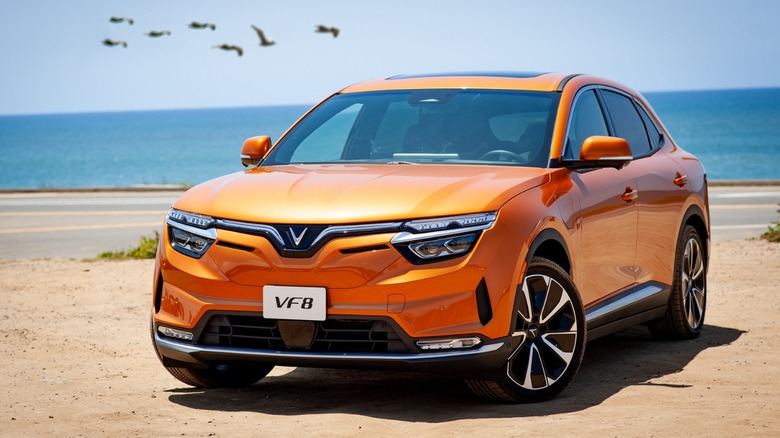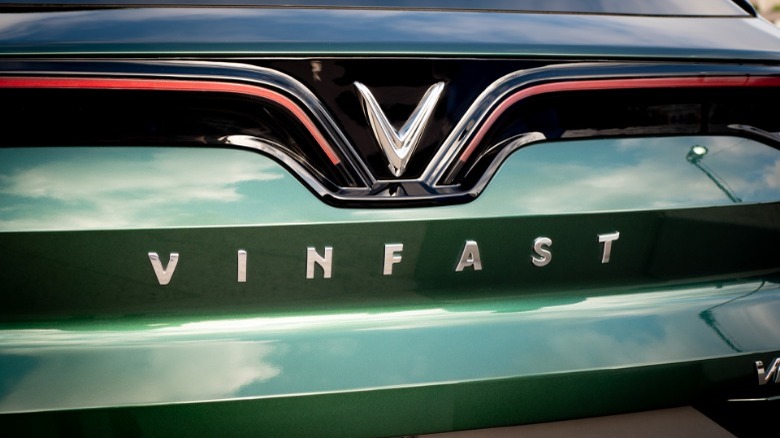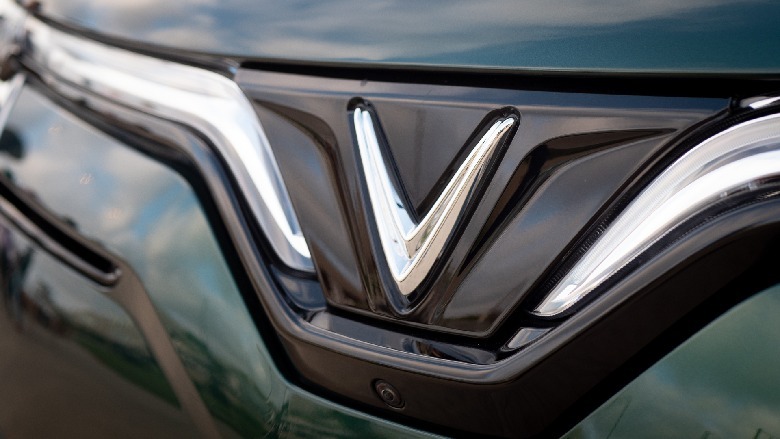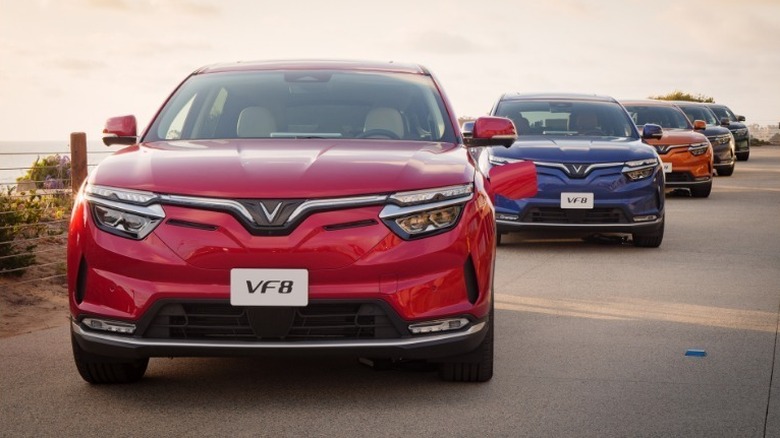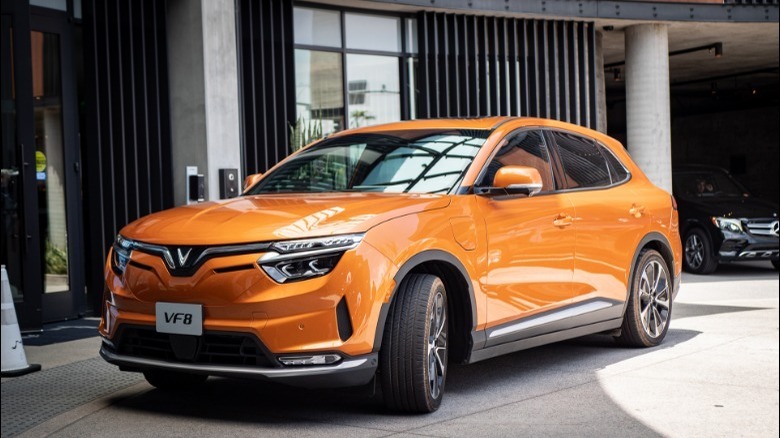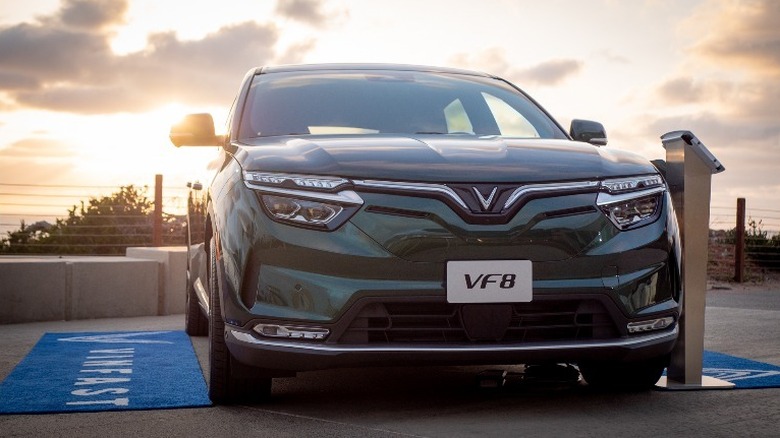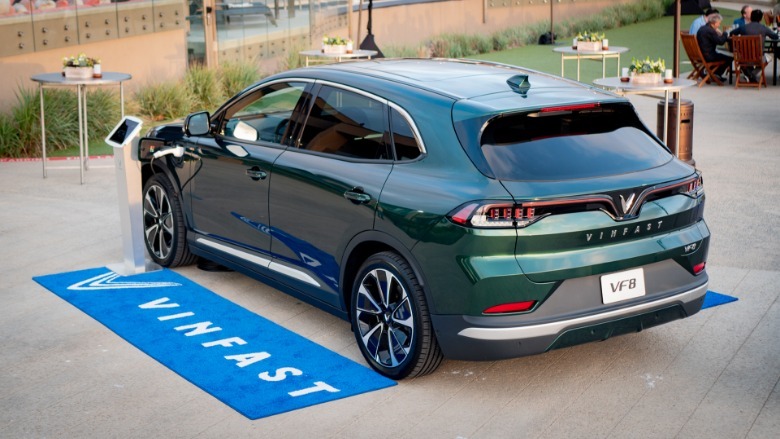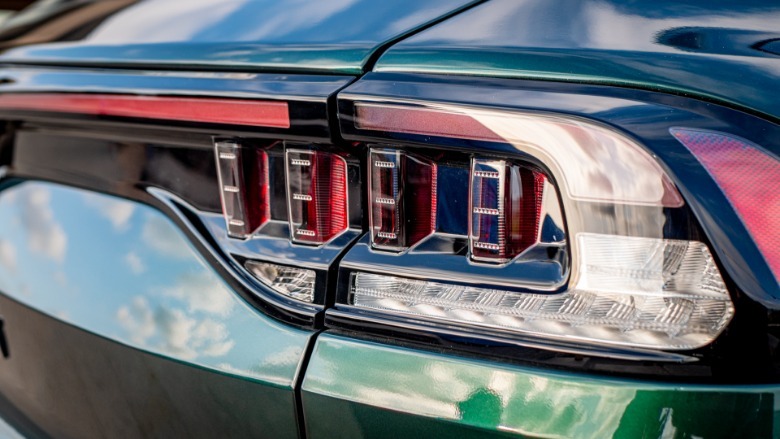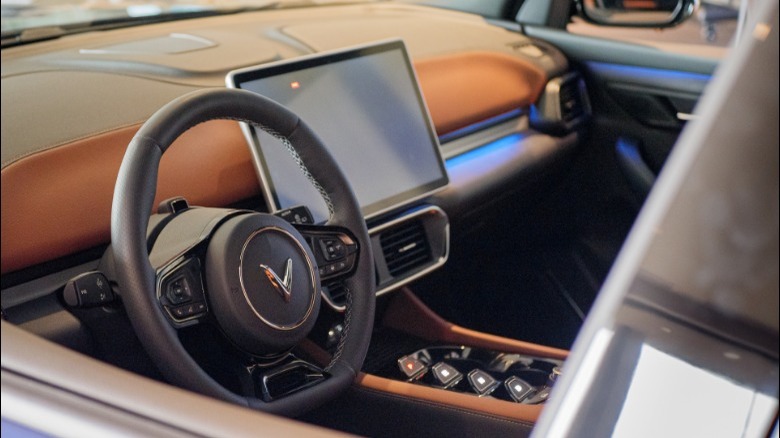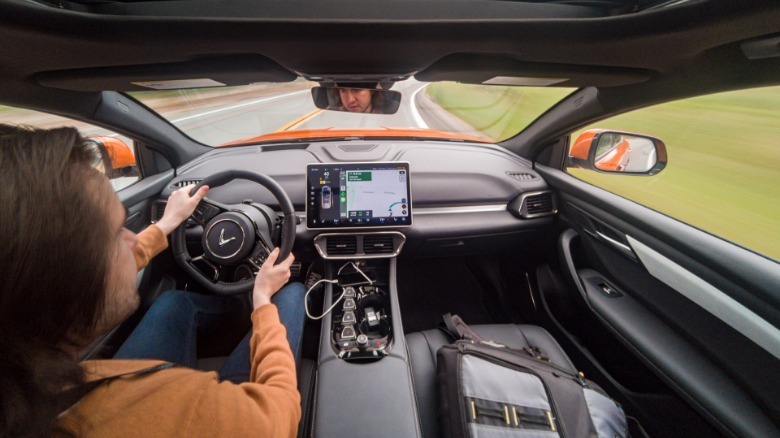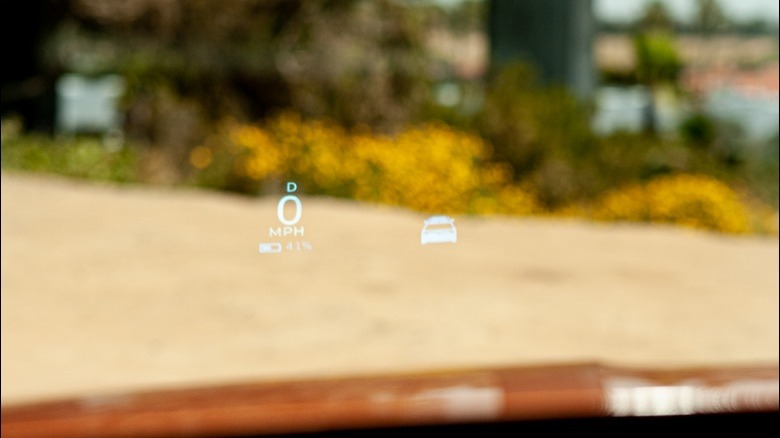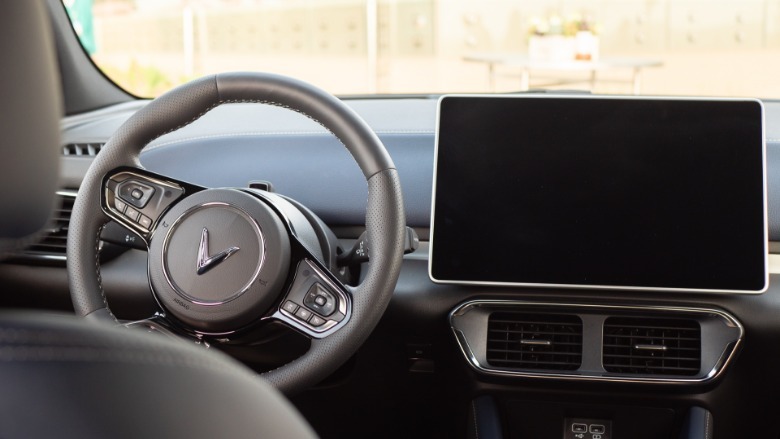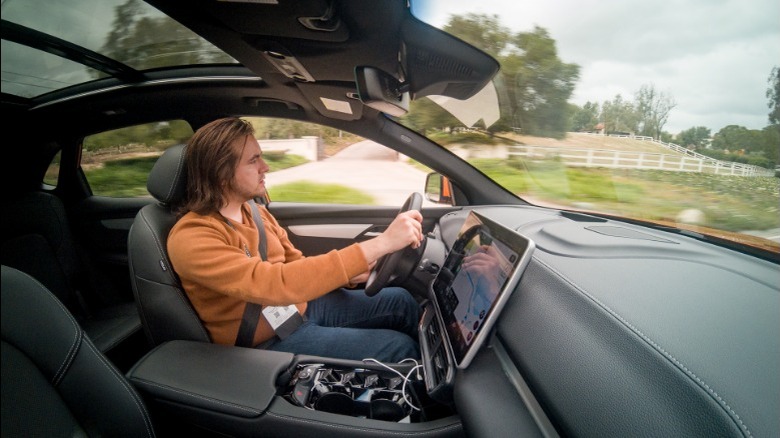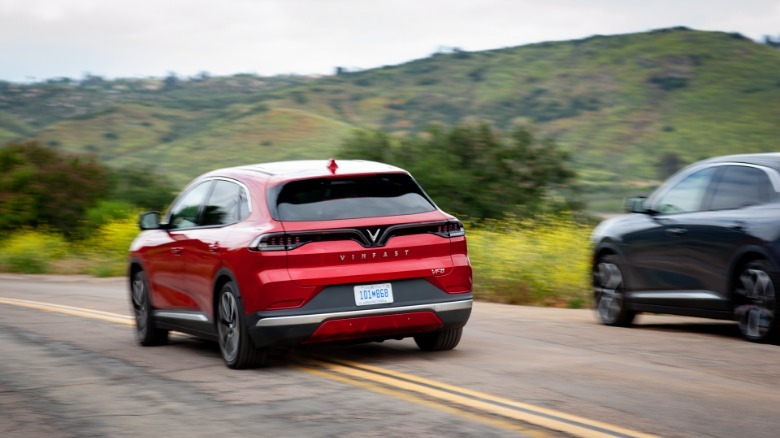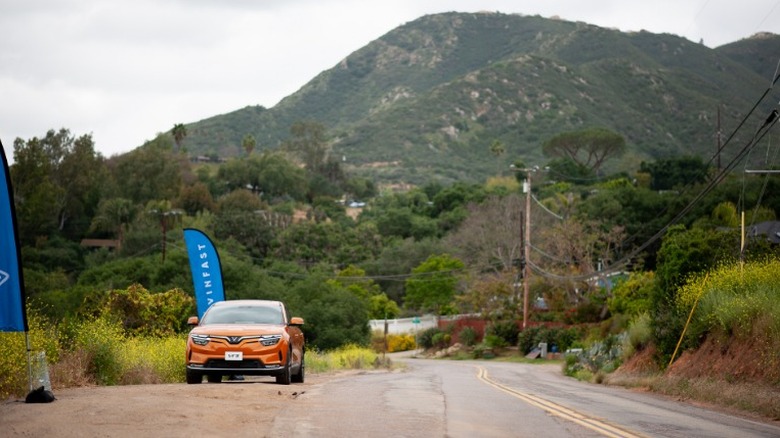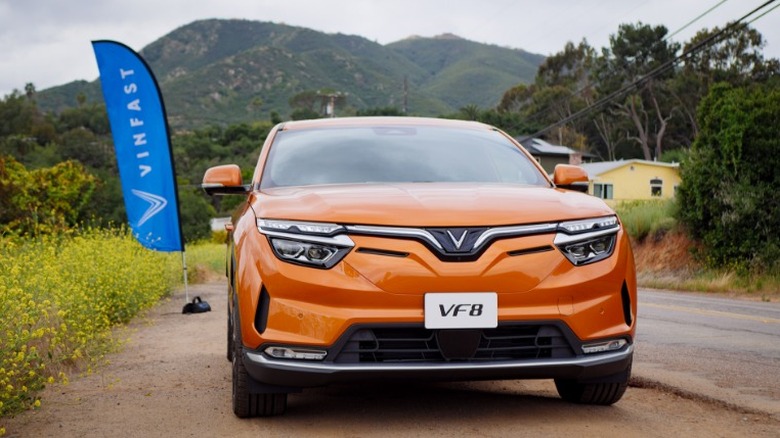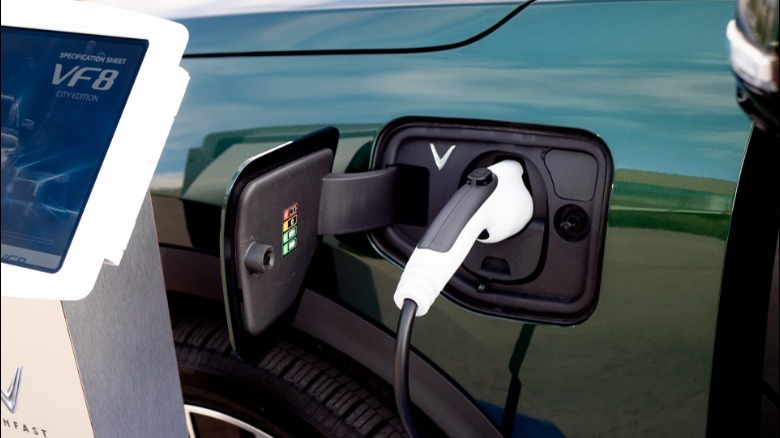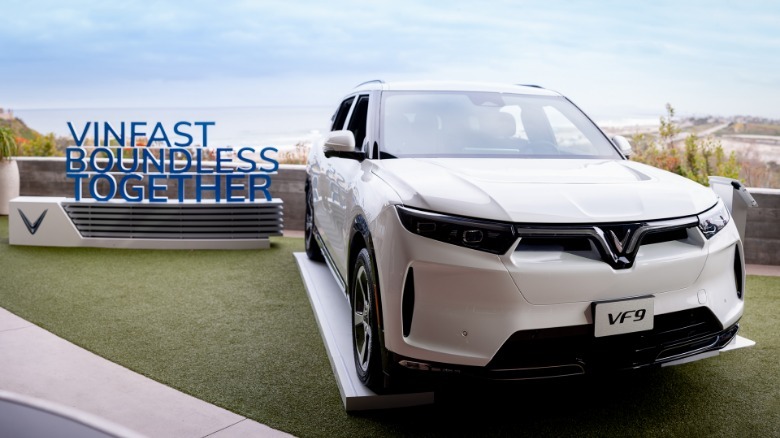2023 VinFast VF8 First Drive: An Inconsistent And Unconvincing EV Debut
VinFast has a lot to prove with its VF8 midsize crossover EV. Up until a few years ago, this was a automotive segment that didn't exist. Now, it's quickly becoming crowded with the likes of the Tesla Model Y, Mustang Mach-E, and Kia EV6. As a newcomer to this market, can VinFast set themselves apart, or drown in an ocean of other compelling options?
To find an answer, VinFast invited me out to a launch event in Encinitas, California, where I got to spend a few hours in and around the VF8 City Edition Plus. The drive route the company selected included a variety of highway miles, urban streets, and sweeping backroads. Essentially, I was able to get a compressed version of the driving terrain that a customer may expect during regular ownership. This also gave time to fiddle around with the car's comfort and safety features, and come away more than a little concerned.
What is VinFast?
Just now making their debut in the North American market, VinFast is the automotive subsidiary of Vingroup, the largest corporate conglomerate in Vietnam. VinFast was officially founded in 2017, and soon after began producing vehicles for the Vietnamese domestic market. As of 2023, the company has pivoted to electric vehicles, starting with this VF8 crossover. VinFast is also hoping to expand its efforts to international markets, including North America. As of yet, the VF8 is available for order in Canada, and exclusively to California customers in the United States.
VinFast tells us journalists that they selected California as their market because nearly half of all EVs in the country are sold there. Driving on the So-Cal streets, you can see truth to that. However, importation issues are probably what limits the company's plans for a national rollout at this moment: currently, the VF8 is assembled exclusively in Hai Phong, then the vehicles have to be shipped to the Pacific coast about 2,000 at a time. At the moment, the company tells us, there are nearly 17,000 reservations for the VF8 on hold, which will take a while to fulfill with this shipping bottleneck.
As part of its larger plan, VinFast is breaking ground on a North American manufacturing facility near Raleigh, North Carolina. The company hopes to have this plant running in 2025, which would likely coincide with a national product rollout. Until then, VF8 production numbers will probably be limited.
VF8 Packages
When it comes to specs, VinFast throws us a bit of a confusing curveball. The first shipment of 999 VF8s they have delivered to the North American market are dubbed the "City Edition". These cars have smaller batteries and lesser range than the final intended version, likely due to difficulty of sourcing larger packs early in production. However, this edition costs the same as the later model, and the company claims that lessees of the City Edition will be able to trade in their car for the larger battery version for free when it becomes available. The City Edition is what we were able to test, despite the fact that the first shipment of the later model was arriving in port around the same time as this launch.
Beyond this temporary caveat, the VF8 is broken into two trim packages, Eco and Plus. For the most part, these trims are nearly identical. With the Plus model, you get more power. The only other big additions are more power adjustment for the front seats, and ventilated seats for the rear. Both trims use dual 150 kilowatt motors, providing all wheel drive. The Eco model gets a combined 348 horsepower and 368 pound-feet of torque, allowing it to accelerate up to 60 miles per hour in 6.5 seconds. The Plus is boosted up to 402 horsepower with 457 torque, dropping its 0-60 time down to 5.5 seconds.
VF8 Range Issues
When it comes to range, I can't help but be let down. Since these two packages use the same size battery, customers will have to sacrifice range to get the power upgrade, and it hardly seems like a worthy tradeoff. VinFast quotes the range on the Eco trim to be 264 miles, which drops to 243 on the Plus trim. These figures get worse when you factor in the City Edition, where the Eco caps out at 207 miles of range, and the Plus only gets 191. Some drivers can make do with that kind of limit, but it is going to limit their options for traveling outside metropolitan areas.
Our pre-planned route for the press drive was 49 miles long, and I added a few stops and detours for camera work. In the morning, the battery was at 68% capacity, and dipped to 40% by the time I got back. Using rough math, this seems pretty consistent with the 191 mile figure. VinFast claims that the VF8 will be able to charge from 10% to 70% capacity in 24 minutes while plugged into a 480V DC charger, but I didn't have the opportunity to test that myself.
According to the company, customers will also be able to navigate and purchase from charging network partners through the VF8 companion app. Some early adopters will also have access to a free charging plan through Electrify America. That's another thing that I was not able to test, since app accounts were not created for us in time for the press drive.
Exterior Styling
To style the VF8, VinFast enlisted Italian design firm Pininfarina, and I think they did a decent job here. The exterior is attractive without being boisterous, and incorporates new branding elements such as a "V" motif in the front and rear LEDs. Panel alignment is mostly consistent, but I noticed some droopiness along the rear hatch of some of these VF8s. The long, sloping roofline evokes both the Mustang Mach-E and the EV6. It looks nice from the outside, but definitely has a negative impact on rear visibility once inside the vehicle.
My biggest criticism with this bodywork is that it could easily be a design from an existing brand. While driving the California route, I happened to see my very first Lucid Air out in the wild. Even at a distance down the road, my eyes gravitated toward that big LED bar as something that I had never seen before. I just don't get that curious feeling when looking at the VF8. As a new company, VinFast could have really taken more risks establishing its design language.
One thing I got to hand it to them for is the paint selection. The bright orange of my test car looked perfect against the ocean backdrop. There are also bright blue and red, plus a forest green option, and the typical white-gray shades.
Interior Design
The inside of the VF8 is not nearly as attractive as the outside. With the dashboard, you get one long slab of gray plastic, with only a touchscreen and a couple of vents to break it up. The shiny aluminum-looking trim pieces are also just polished plastic, and they'll likely get scuffed up over long term use. You'll notice a complete lack of gauge cluster, similar to the Tesla Model 3. However, the windshield-projected HUD does a decent job on its own of relaying speed and cruise control information.
The leatherette steering wheel has a good feel to it, but the inclusion of a flat bottom makes city driving a tiny bit more inconvenient just for a sportier look. Front seats have full electric adjustment, with decent side bolstering. However back support is seriously lacking. I tried to use the control switch to give me some more lumbar support, but it didn't seem to do much at all. All VF8s also get a large electric moonroof, which I found engaged smoothly and gave a great view outside. Another thing that spices up this otherwise spartan interior is LED accent lighting that can be customized to your color preference.
The only physical controls you'll see in this cockpit are the turn signal and wiper stalks, window switches, media and cruise control buttons on the steering wheel, and a single volume knob in the center console. The transmission is controlled through a push-button system similar to some modern Hondas. Absolutely everything else is run through the touch screen. This presents problems.
UI Issues
As the oldest 27 year old on Earth, I do not enjoy using touch controls at the best of times. Some of the choices by VinFast make the lack of physical buttons even worse. For instance, to adjust the side mirrors, the user is supposed to push the picture of the mirror that is on a little diagram of the car in the corner of the main screen. However, most other options are selected through typical sub-menus that have nothing to do with this diagram.
I ran music and navigation through Apple CarPlay. I'm constantly annoyed by the over-reliance modern cars have on smartphones, but the system worked fine. The factory stereo I thought was cheap-sounding. It lacked any punchy bass, even with the equalizer cranked all the way up. Another driver in my group had tried to use the VF8's native navigation, but found that car actually thought that it was back home in Vietnam. Hopefully all of these systems are being re-programmed before they actually reach customers.
After some growing pains, I got used to the touch controls, but one thing that constantly bugged me was the lack of turn signal indicators in the HUD. You can only see what your turn signals are doing in a tiny corner of the touchscreen, so I was always wondering if they were on. There is a sound chime for these signals, but it gets drowned out by the radio. There are also side-visibility cameras that popped up onto the screen occasionally. Honestly, I don't know what action caused them to activate or de-activate at any point.
Driving Impressions
Overall, the chassis of the VF8 is solid. As a crossover, it naturally has some body roll through corners, but the tires stay planted firmly. These So-Cal roads can get pretty terrible, but the vehicle did a decent job of soaking up the bumps and cracks. Some drivers in separate VF8s found their cars to be too floaty, and questioned whether their suspension was aligned correctly; others reported a host of other electrical and drivetrain gremlins. That's concerning, since you'd assume VinFast would have spent time polishing these particular cars for their moment in the media spotlight. The steering had a lot of that on-center numbness that you would expect to find in earlier electric power steering systems, but that's not necessarily a bad thing to have in a commuter EV.
One choice I cannot abide by in the VF8 is the (lack of) throttle response. The car has three driving modes: eco, normal, and sport. In both eco and normal, the go-pedal feels practically useless for the first 50% of its throw. That's something that could present a genuine danger in defensive driving situations. Kick it over to sport mode, and power delivery suddenly becomes much more linear. It accelerates very quickly up to highway speeds without giving too much power to handle. However, sport mode deactivates every time you put the car in park.
The traditional brake pedal is also very stiff, which I find to be the case on a lot modern vehicles. With the aggressive motor regen, you don't need to rely on brakes much, although the regen can be turned to a weaker setting if you like. At first, I found this regenerative braking to be overbearing, but by the end of my seat time I became more comfortable using the one-pedal driving technique.
Safety Features
The VinFast reps made a big deal of all the safety tech in the VF8, but it's mostly stuff that other brands have adopted at this point. You get adaptive cruise control, lane-keep assist, lane departure warnings, and blind spot warnings. The front camera on the car also scans speed limit signs and handily pops their reading up to your HUD.
The cruise control I found to be one of the nicest features on the VF8. It was very reliable in matching the speed of the vehicle up front, and could coast to a stop on its own. It also keeps a conservative distance, even when switched to the most aggressive setting. However, I couldn't tell if the accompanying lane-keep was doing much. There were only a few times I definitely felt it kicking in. Either way, I was not going to take my hands off the wheel to see what would happen.
A lot of these other driver aids are more of an annoyance than a help. Every time a car passes near your blind spot, there's a beep. Every time you reach the speed limit, another beep lets you know you've reached the speed limit. If you find yourself in a particularly narrow street, the lane departure warning will just be beeping all of time. Many of these things can be turned off, but the customer will be paying for these features whether they use them or not.
Service & Update Plan
VinFast plans to support the VF8 with regular wireless software updates, and they'd better do it quickly. Things like the numb throttle and the too-subtle turn signals need to be addressed as soon as possible. Many of the other issues with this vehicle could also be alleviated in software. Initially, the company plans to introduce parking assist and summon mode with an update.
Another thing that VinFast is proud of is its warranty plan. Right now, they offer a ten-year, 125,000 mile warranty that covers every component of the vehicle, and includes 24/7 roadside assistance. The battery pack is also warrantied for ten years, but with unlimited mileage. To pull this off, the company plans to open 28 retail stores and service centers this year in California. Each store will also have a mobile service van to deploy to customers. This plan is tempting, but it also sounds like it would be difficult to maintain when the company expands to a national scale.
This warranty is also contingent on VinFast operating in this country for another ten years, and that carries risk. With 99.99% certainty, I can tell you that if you buy a Honda today, that you will have a shop to service that particular car a decade from now. I cannot say the same for the VF8. Despite being a huge company that has its hand in everything from hotels to healthcare, Vingroup has been building cars for less than six years, and building cars at scale is not an easy proposition for newcomers.
Pricing & Verdict
Despite just entering the market, VinFast has huge plans for the near future, including this North Carolina plant and new models. The automaker showed us a prototype for the VF9, which appears to share many components with the VF8, but is larger with third-row seating. However, they couldn't give us a release window for that model. There are also plans to build two smaller crossover EVs: the VF6 and VF7. After driving the VF8, I have to wonder if this company is doing too much too fast. The priority should be on refining their debut as much as possible, through software updates and perhaps an interior refresh. In its current state, the car feels more like a Beta product than something to buy today.
For California, the VF8 Eco has a listed retail price of $49,000, with the plus model going up to $56,000. This is comparatively priced with competitors like the Mustang Mach-E and the Kia EV6, but the competitors are much more proven brands. Kia also offers a ten-year, 100,000 mile warranty, which is almost as good as what VinFast is promising. Additionally, the City Edition Eco can be acquire by 36-month lease for as low as $414 per month, but that's only as long as City Edition supplies last.
At best, the VF8 is approaching what other basic EV crossovers are already offering. It doesn't have many unique features to set itself apart from the crowd, unless you count inconsistent software. That said, I can only really recommend the VF8 over the spread of comparable — and generally much better — options if you really want to take the risk in supporting a new company, and giving it the chance to grow into something more proven. That seems like a risk most new electric vehicle owners won't be eager to embrace.
